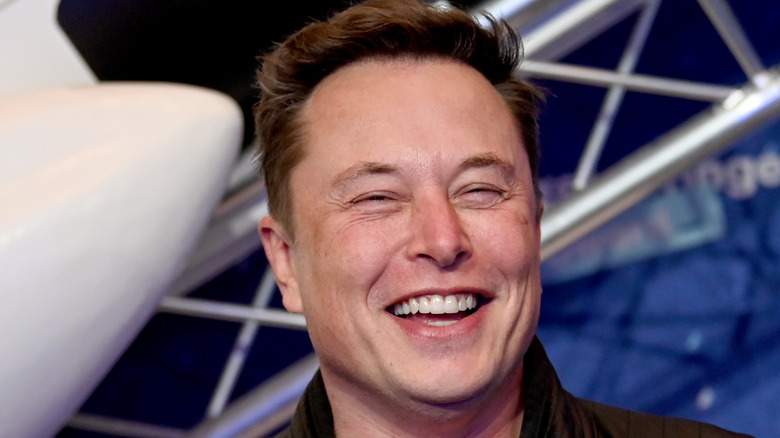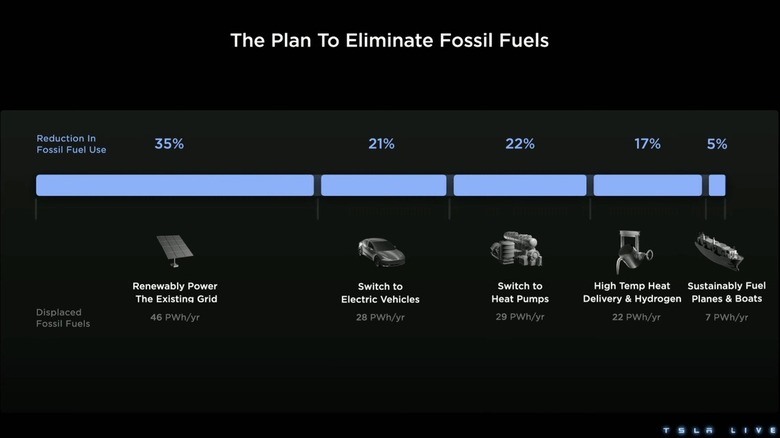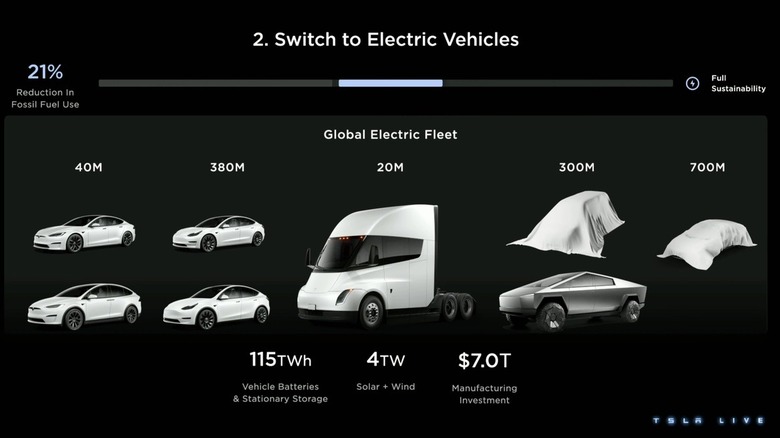Elon Musk's Tesla Master Plan 3 Is An Audacious Vision For A Green Earth
Whether or not the company is doing things the right way, renewable energy is Tesla's whole modus operandi, and moving away from fossil fuels and investing in renewable and sustainable sources of energy is the right thing to do. But it will take a massive move of resources and cooperation from essentially the entire global economy to get things on track.
According to Tesla, over 80% of the energy consumed by the world comes from fossil fuels and only a third of that energy does something useful — the rest is waste. Tesla thinks it can come to the rescue. During Tesla Investor Day 2023, the company laid out its goals for a greener Earth, and it's called Tesla Master Plan 3 ... because if you want to start sounding like a supervillain, you must have numbered Master Plans. Tesla's plans are wide-reaching and incredibly audacious. According to Elon and his team, it's all entirely feasible.
The steps to green energy
Right off the bat, the plan has incredibly lofty goals. By 2050, Tesla thinks it's feasible to run the globe on sustainable materials in five very far-reaching steps. The first step is to switch the entire existing power grid to renewable fuels. That's very easy for Elon Musk to say in front of investors but will require the cooperation, time, money, and effort of essentially every human and organizational body on Earth to be feasible in a 27-year time frame. According to Tesla, it will cost about $10 trillion.
Numbers-wise, Tesla calculates that the current power infrastructure must triple its current developmental pace in solar and wind power farms. As far as space, the company says that it will take an order of magnitude less space than the area currently used for farming. To go according to plan, those wind and solar farms would need to generate about 30 terawatts of electricity.
It will take a lot of money and time
The next step of the Master Plan is to switch entirely to electric vehicles, something Tesla has at least some expertise in. Currently, all auto manufacturers make about 8 million electric cars per year. To go according to plan, that needs to be expanded to 84 million vehicles per year.
Through a $7 trillion manufacturing investment, Tesla hopes it can reach a global fleet of 40 million Model S and Xs, 380 million Model Ys and 3s, 20 million Tesla Semis, 300 million Cybertrucks and a yet-to-be-revealed model, and a staggering 700 million of another Tesla that hasn't been announced yet. Elon also noted during the presentation that he does not think hydrogen will be useful for transportation applications and that not driving an EV in the future will be akin to still using a horse for transport.
If that wasn't lofty enough, the Master Plan also includes a roadmap to replace furnaces and other sources of heat with heat pumps in every single building. For the fourth step, Tesla hopes it can electrify high-temperature heat delivery in manufacturing processes and move to hydrogen where able. Lastly, the plan is to be able to sustainably fuel all aircraft and boats, even heavy-lift aircraft, tankers, and container ships. This is, of course, all significantly easier said than done. It's 2023 now, and Tesla has 27 years to get to fully sustainable energy. The clock's ticking.


